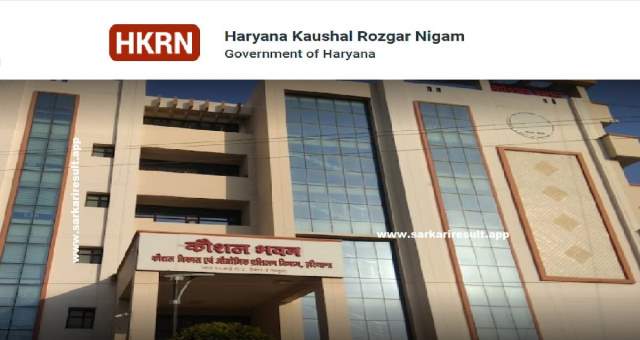Traffic Control Plans: Ensuring Safety and Efficiency on Our Roads
Key Takeaways:
- Traffic control plans are crucial for road safety and efficiency.
- Key components include signage, signals, and personnel management.
- Effective plans can prevent accidents and improve traffic flow.
Table of Contents:
- Introduction to Traffic Control Plans
- Components of a Traffic Control Plan
- Signage and Signals
- Personnel Management
- Benefits of Effective Traffic Control
- Challenges in Implementing Traffic Control Plans
- Technological Innovations in Traffic Management
- Real-world Examples of Effective Traffic Control
- The Future of Traffic Control Planning
Introduction to Traffic Control Plans
Traffic control plans are intricate yet indispensable frameworks that dictate the organization of roadways, ensuring the safety of drivers, cyclists, and pedestrians in diverse environments. These plans are vital, especially in urban areas where the number of vehicles and foot traffic require systematic regulation. As the world becomes more congested with increasing population and vehicle numbers, the importance of these plans cannot be overstated. They are the cornerstone of safe road maintenance, integrating design, personnel, and technology.
In light of the escalating issues related to road congestion, traffic control plans offer solutions that mitigate chaos, transforming potentially hazardous environments into well-regulated spaces. These plans account for current challenges and are flexible enough to adapt to emerging trends. This adaptability ensures their relevance and effectiveness even in evolving transportation landscapes. By systematically addressing each unique road scenario, from quiet residential streets to bustling highways, traffic control plans reduce the risk of accidents, safeguard lives, and enhance the overall efficiency of traffic systems.
Components of a Traffic Control Plan
Signage and Signals
The cornerstone of any effective traffic control plan lies in its signage and signals. Proper signage acts as a silent communicator, providing necessary information that keeps drivers informed and zones regulated without human intervention. Well-placed signs prevent driver confusion by offering clear instructions, warnings, and behavioral expectations. Meanwhile, signals—especially traffic lights—play a dynamic role in regulating flow at intersections, deciding the rhythm of traffic, and influencing the overall efficiency of journeys. A well-crafted traffic control plan Washington is often used as a benchmark for managing complex road networks due to its comprehensive approach to safety and efficiency. Their strategic implementation is crucial, as it directly impacts the smoothness of traffic flow and the occurrence of bottlenecks, which are common in urban settings.
Personnel Management
Although technology plays a massive role in traffic management today, the human element remains irreplaceable, mainly where dynamic situations arise. Trained personnel manage these variables by offering immediate responses to unexpected situations, such as roadblocks or accidents. Their role extends beyond simple traffic direction; they are essential for adaptive management in construction zones, during large-scale public events, or in emergencies where automated systems might fall short. The presence of knowledgeable traffic personnel ensures that safety protocols are upheld, mitigating risks and maintaining order even in the most chaotic situations.
Benefits of Effective Traffic Control
Implementing effective traffic control systems brings substantial benefits, notably in reducing accidents and enhancing road efficiency. By creating an organized environment, these systems significantly minimize the likelihood of accidents caused by confusion or misinformation. Moreover, they help manage the ever-growing problem of urban traffic congestion, resulting in improved travel times and reduced frustration among road users. As a result, cars spend less time idling, improving fuel economy and lowering emissions—key components in the fight against climate change. These environmental benefits make traffic control plans an instrument for immediate safety and efficiency and a long-term contributor to sustainable road traffic solutions.
Challenges in Implementing Traffic Control Plans
Implementing these plans is not without challenges. The unpredictability of road conditions—ranging from weather incidents to unexpected surges in vehicle numbers—poses significant hurdles. Added to this is the variability in driver behavior, which can range from overly cautious to unpredictably aggressive, influencing how well these plans perform. Planners are often required to create adaptable systems that respond in real-time. As the World Economic Forum highlighted, fostering innovative responses to these challenges is crucial. Ensuring plans remain relevant and practical is critical for maintaining safety and functionality, necessitating ongoing research, investment, and adaptation of emerging technologies to keep pace with changing demands.
Technological Innovations in Traffic Management
The role of technology in traffic management has transformed traditional methods into highly efficient systems capable of managing modern traffic demands. Innovations such as bright traffic lights, adaptive control systems, and AI-driven traffic monitoring have redefined how city planners approach road safety and efficiency. These systems offer real-time responses to changing traffic conditions, allowing immediate flow redirection to prevent jams and potential collisions. The U.S. Department of Transportation emphasizes the importance of these technologies in improving road safety. By providing insights and facilitating informed decisions, these technological tools enhance the capability of traffic control systems significantly.
Real-world Examples of Effective Traffic Control
Numerous cities showcase the effective implementation of traffic control plans, setting examples for others to follow. For instance, New York City has successfully navigated its complex road networks by leveraging advanced traffic systems integrating data analysis and strategic planning. Singapore, renowned for its efficient public infrastructure, employs an intricate blend of regulations and innovative technology to maintain its traffic flow seamlessly. These cities demonstrate the potential of traffic control plans, illustrating how thoughtful design and integration can transform urban traffic management from a challenge into a strength, benefiting residents and visitors alike.
The Future of Traffic Control Planning
Looking to the future, automation and AI are poised to revolutionize traffic control. Upcoming advancements could feature vehicles communicating autonomously with road systems, optimizing safety and efficiency through sophisticated, coordinated efforts. Deploying such technologies will usher in an era where human error is minimized, and road networks function like well-oiled machines. Transitioning to these advanced systems will also address shortcomings, providing more scalable and adaptable infrastructure. This evolution promises a future where traffic control plans are more effective and contribute positively to societal and environmental landscapes.







